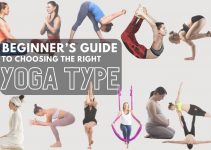- Meaning
- Hatha Yoga Pradipika Chapters in nutshell
- First Chapter – Asana
- Second Chapter – Shatkarma & Pranayama
- Third Chapter – Mudra & Bandha
- Fourth Chapter – Samadhi
- The Main Teachings

Hatha yoga pradipika is the oldest and most authentic textual source of hatha yoga teachings and philosophy. A Nath sect yogi Swami Swatmarama compiled it around the 15th century CE. However, apart from his own experience, Swatmarama took reference from Vedas and the teachings of his great Gurus to compile this book. He cleared this in the beginning verse that “I am only a tool of transmission for the knowledge“.
Indeed, originally the text title was Hathapradipika. Later when it’s decoded by yogis, they added the term ‘Yoga’ in it, and so on, different commentary published with the name of Hatha Yoga Pradipika.
Meaning & Content of Hatha Yoga Pradipika
The text title Hathapradipika or ‘Hatha Yoga Pradipika’ itself has an explanatory meaning. Normally Pradipika is translated as ‘light’ or ‘which lights’. So the title literally translates as ‘Light on Hatha Yoga’.
Sometimes Pradipika translates as ‘self-illuminating’; something that has its own illuminating power to shed light on darkness or ignorance. The way a Hatha yogi acquires different powers and attain complete yogic wisdom -everything on his will power and by force (hatha). It shows we all have that self-illuminating power for all physical, mental, and spiritual problems; we can get everything we want by efforts and strong will power (hatha). Hence Hathapradipika can also be translated into ‘self-illuminating by force’.
The content
It’s very interesting to observe the pattern and layout of chapters in the book. There are 4 chapters in Hatha Yoga Pradipika that cover all practices, philosophy, and instructions of hatha yoga in 389 verses (shlokas or sutras).
- Chapter 1 contains 67 verses including 2 verses on Yama & Niyama (16th & 17th) and the rest 50 verses on Asanas.
- Chapter 2 contains 78 verses on Shatkarma & Pranayama.
- Chapter 3 contains 130 verses including around 100 verses on Mudras & Bandhas and the rest 30 verses on kundalini.
- Chapter 4 is all about Samadhi including the concept of Nadis and Ishvara (God) contains 114 verses.
If you will see the major practices that are covered in 4 chapters of Hatha Yoga Pradipika are 6 in number; Asana, Shatkarma, Pranayama, Bandhas, Mudras, and Samadhi. These 6 practices are called the 6 limbs of hatha yoga. In contrast to Patanjali’s 8 limbs of yoga, Hatha yoga is called six-limbed yoga or Shadanga yoga.
Hatha Yoga Pradipika Chapters in Nutshell
Swami Swatmarama has organized all the content of hatha yoga in an order that is easy to follow whether you’re a beginner or an advanced follower.
Here’s the chapter wise summary of Hatha yoga pradipika;
First Chapter – Asana
- The first two verses are dedicated to Lord Shiva and define the real purpose of hatha yoga is only to attain Raja yoga.
- In the 3rd verse, Swatmarama defines the reason for compiling hatha yoga science over Raja yoga.
- The next 5 verses tell the name of great Siddhas and masters of hatha yoga that came before Swatmarama; Matsyendranath, Goraknath, etc.
- In verses 9 to 16, for hatha yoga seeker guidelines are defined to practice yoga; what causes failure and success in yoga, and ethics one has to follow (Yama & Niyama).
- Verse 17 to 54 are dedicated to 15 asanas of hatha yoga;
- Verse 17 & 18 is on the introduction of asana
- Verse 19 to 32 details the first 11 postures
- Verse 33 and 34 mentioned that Shiva taught 84 asanas out of which 4 are most important.
- In verse 35 to 54, 4 most important asanas of hatha yoga are defined i.e. Siddhasana, padmasana, simhasana and bhadrasana
- In verses 55 to 65, the next practices that come after asanas are mentioned along with what type of food a yogi should eat and his behavioral qualities.
- The chapter first ends with verse 67 explaining “hatha yoga should keep practicing until success in Raja yoga is attained”.
Second Chapter – Shatkarma & Pranayama
- Chapter 2 begins with an introduction and importance of Nadi cleansing and pranayama in the first 6 verses
- In verses 7 to 20, methods to perform pranayama are mentioned with what disease it eradicates.
- After pranayama, verses 21 to 41 are on the 6 cleansing techniques known as Shatkarma.
- First Shatkarma Dhauti is on the cleansing of the food pipe, defined in verse 24 & 25
- The second is basti defined in verses 26 to 28. It comprises the technique of cleansing the large intestine.
- The third is Neti, cleansing of nasal passages defined in verse 29 & 30
- Fourth is Trataka defined in verse 31 & 32
- Fifth is Nauli kriya defined in verse 33 & 34
- Verse 35 to 41 comprise the method of Kapalbhati and Gaja Karani
- Verse 42 to 77 are on kumbhakas that we practice today as different types of pranayama. However, in hatha yoga pradipika, 8 specific pranayamas are defined.
- Chapter 2 ends with verse 78 defining the signs of getting success in hatha yoga practice.
Third Chapter – Mudra & Bandha
- Chapter 3 begins with the concept of tantra & kundalini and mudras importance to awaken goddess kundalini in the first 5 verse
- Verse 6 to 9 name the different mudras of hatha yoga along with 8 divine power (ashta siddhi) a seeker can get by the practice of mudras & bandhas. However, in all, there are 10 mudras and bandhas are defined in hatha yoga pradipika.
- Next consecutive verses elaborate specific mudra in detail;
- Verse 10 to 18 define Maha Mudra and its benefits
- Verse 19 to 25 define Maha Bandha and Triveni (conjunction of Ida, Pingala, and sushumna Nadi)
- Verse 26 to 31 define Maha Vedha mudra to make prana into the central Nadi.
- Verse 32 to 54 covers everything about khechari mudra and how it helps in kundalini awakening
- Verses 55 to 77 covers 3 bandhas namely Uddiyana Bandha, Mula bandha, and Jalandhar bandha
- Verses 78 to 112 elaborates on important mudras for kundalini arousal which are; Viparita Karani, Vajroli, sahajoli, amaroli, and shakti chalana.
- Verse 112 to 130 explain details of Kundalini and various ways to awaken it by combining the practice of pranayama, asanas, and mudras.
Fourth Chapter – Samadhi
- Chapter 4 first verse begins with introducing Nada, Bindu, & Kala as the supreme state of bliss and so in the next verse Swatmarama introduce Samadhi.
- Verse 3 to 4 gives synonyms of the higher state of bliss i.e. Raja yoga, samadhi, unmani, Manonmani, Amaratwa, Laya, Tatwa, Sunya, Asunya, Parama, Pada, Amanasska, etc.
- In verses 5 to 7, Samadhi is defined using various analogies.
- Verse 8 & 9 describe the importance of a guru in attaining Samadhi.
- Verse 10 to 17 are on the various subtle signs in terms of Prana flow are defined when a yogi is about to attain Samadhi.
- Verse 18 to 21 explain how the condition of manomani (samadhi) is attained when Prana starts flowing through central Nadi Sushumna.
- Verse 22 to 25 light on the relation between breath & mind and how by controlling breath yogi leads to moksha (liberation).
- verse 26 to 28 talks about how preservation of Bindu takes place when yogi control their breath.
- Verse 29 to 33 are one the laya and nada.
- In verses 34 to 68, various mudras are explained on Bindu preservation which stops it from flowing downward.
- In verse 69 to 76 4 stages of any yoga practice outlined where 4th verges on samadhi. These 4 stages are arambha – the beginning stage, ghata – vessel stage, parichaya – known stage; nishpatti – consummation stage.
- Verse 76 to 102 are on the Nada yoga.
- Verse 102 to 114 list various phenomena of a yogi in the state of samadhi.
The Main Teachings of Hatha Yoga
Once you understand the central message of Hatha Yoga Pradipika, you can better emulate its techniques and philosophy in your life.
The way different concepts have appeared in the text portrays the following message;
- Swami Swatmarama introduces the teachings of hatha yoga pradipika as a prefatory sadhana to reach the highest goal of Raja yoga i.e. to achieve a state of liberation and obtain Moksha.
- To attain moksha, HYP elaborate it’s a step by step process of 7 practices called ‘Sapta Sadhanama‘. The 7 processes are; purification (by shatkarma), strength (by asana), steadiness (by mudra), calmness (by pratyahara), lightness (by pranayama), right perception (by dhyana), and isolation (by samadhi).
- Hatha yoga’s main aim is to bring the opposite energy into balance. It balances prana flow in Ida and Pingala which leads to the opening of Sushumna Nadi. Such, the awakening of Sushumna Nadi makes the passage for kundalini to travel upward into higher chakras.
- The body is said merely a physical tool in this process that is strengthened by hatha yoga asanas. In contrast to Patanjali yoga where asanas are meant to calm down Rajas guna, in hatha yoga, asanas are dynamic in nature which have the main purpose to remove Tamas (inertia).
- HYP explains some ideal conditions which a seeker must have follow in order to achieve success in hatha yoga. Along with it, the text contains six causes that destroy the seeker’s yoga practice.
Conclusion
In Hatha Yoga Pradipika importance is given to balance the opposite flowing energies by forceful physical postures. When the prana does not flow in Sushumna, when the Bindu is not conserved, when the mind is affected by external forces while meditation, then the person cannot be called a Hatha yogi. A householder or a married person can become a Hatha yogi if he learns to discipline himself by hatha yoga practices.




